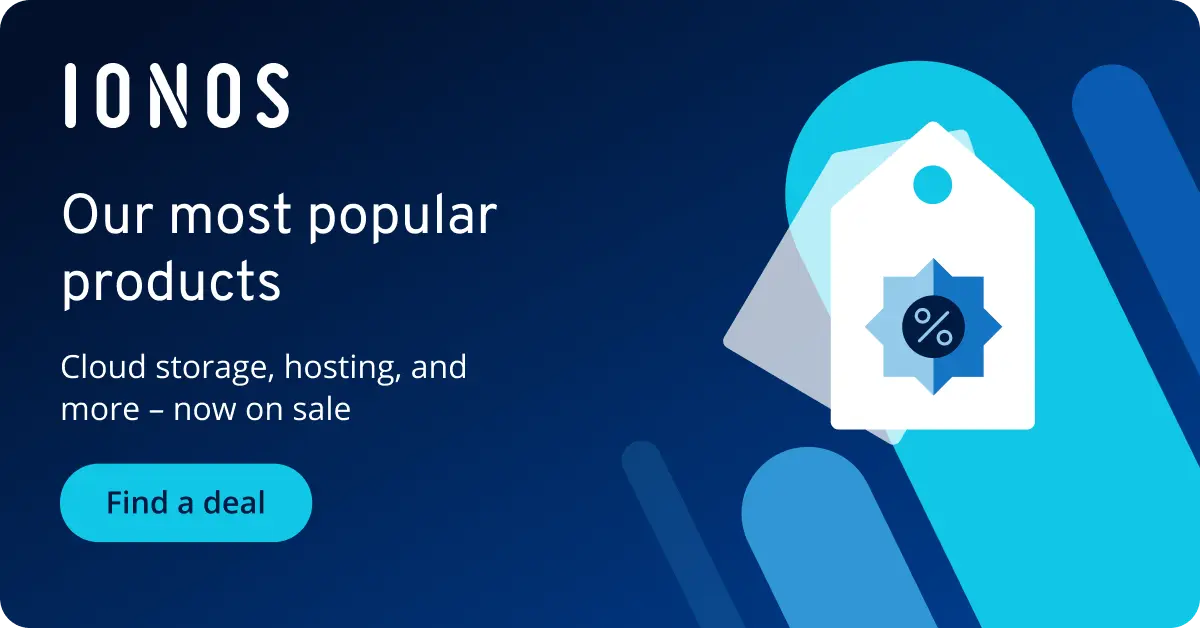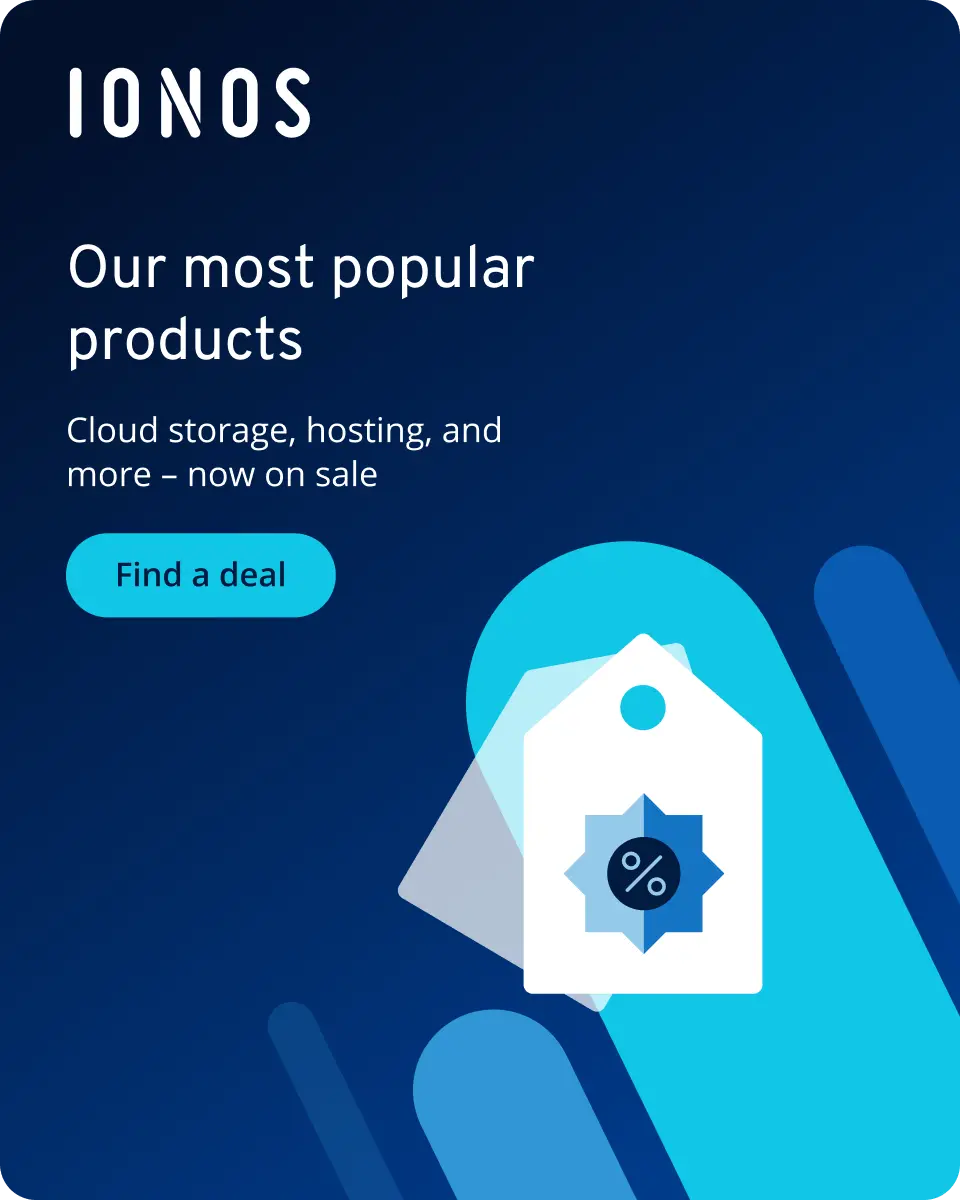How can you make your website inclusive with accessible web design?
Accessible web design brings together good design, social responsibility and legal compliance. It shows how websites need to be built to meet legal standards while making sure that everyone, regardless of ability, can use them without barriers.
- Get online faster with AI tools
- Fast-track growth with AI marketing
- Save time, maximize results
What is accessible web design?
Accessible web design means creating websites that everyone can use, regardless of their physical, cognitive, or technical limitations. This includes making content available to people who are blind or visually impaired (for example, with the help of screen readers as well as those with motor disabilities or learning difficulties. Even people with temporary impairments or those who are in challenging environments benefit. It’s not just about technology. It’s also about design and layout. Accessibility is a key part of inclusive digital communication.
Why is accessible design important?
Starting in June 2025, the EU Accessibility Act will require many digital products and services — including websites, apps, e-books, and online stores — to meet specific accessibility standards. The goal is to ensure that everyone, including people with disabilities, can use digital services without barriers. Each EU country is adapting the directive into national law. In Germany, for example, through the Accessibility Strengthening Act (BFSG).
Important for U.S. companies: If your business offers digital services to customers in the EU — or plans to — these rules apply to you, too. That means accessibility isn’t just a European concern. It’s a global standard for reaching users and staying compliant.
The Web Content Accessibility Guidelines (WCAG) serve as the main reference standard for compliance under these laws. They define how to make websites more accessible in terms of design, structure, and functionality.
Beyond legal obligations, accessible websites offer numerous benefits: they expand audience reach, enhance brand reputation, and improve the overall user experience. Accessibility also has a positive impact on search engine optimization (SEO) and site performance.
What are the eight key principles of accessible web design?
The Web Content Accessibility Guidelines (WCAG 2.1) consist of 13 guidelines that are based on four fundamental principles: perceivability, operability, understandability, and robustness. When applying these principles to web design, several key design considerations are particularly important:
Checklist: Design-oriented WCAG guidelines at a glance
| Guideline | Design relevance | Implementation tips |
|---|---|---|
| Text alternatives | Non-text content (e.g. images, icons) must be describable | ✓ Provide alt texts ✓ Label icons ✓ Exclude decorative elements |
| Adaptable content | Content must also be perceivable linearly, without layout | ✓ Use semantic HTML ✓ Logical content order ✓ Flexible grid system |
| Perceivability (color, contrast, audio) | Color must not be the only way to convey information; content must be high contrast and legible | ✓ High-contrast color choices ✓ Clear typography ✓ Adequate font sizes ✓ Clear foreground/background separation |
| Keyboard accessibility | All functions must be usable without a mouse | ✓ Make focus indicators visible ✓ Avoid mouse-only interactions |
| Navigation and orientation | Users should be able to orient themselves easily and find content quickly | ✓ Clear page structure ✓ Descriptive headings ✓ “Skip to content” links |
| Readability | Language must be understandable for the target audience | ✓ Simple sentence structure ✓ Use technical terms sparingly |
| Predictable behavior | Interactions should not trigger unexpected effects | ✓ Clearly label buttons ✓ No auto-redirects without notice |
| Error prevention and support | Forms should be user-friendly and tolerant of errors | ✓ Clear labels ✓ Meaningful error messages ✓ Autofill and validation aids |
Tips for designers
Accessible web design starts with visual and structural planning. A flexible, responsive layout is not only a web design trend — It’s essential for making sure content displays correctly and works smoothly across different devices.
When it comes to color schemes, color should never be the only way to convey meaning. Status indicators, warning messages, and buttons should always be supported with icons or text, so users with visual impairments can navigate clearly and confidently.
Interactive elements like buttons, links, and checkboxes need to be large enough and easy to recognize. The WCAG recommend a minimum size of 44 × 44 pixels, especially to help users with motor impairments on touch devices.
Typography also plays a key role. A clear visual hierarchy, using font sizes, subheadings, and emphasis, helps users find their way around. Sans-serif fonts tend to be easier to read, and sufficient line spacing (at least 1.5x) improves overall readability.
Tools for testing accessible web design
There are many tools available to help you check the accessibility of your digital content. WAVE (Web Accessibility Evaluation Tool) and Accessibility Insights are popular browser plugins that let you identify barriers directly in the frontend. For manual checks like color contrast analysis, tools such as Contrast Checker are useful. Screen readers are also essential for testing how real users experience your site. Keep in mind that automated tools can only catch a portion of accessibility issues. A thorough manual review is essential to ensure full compliance.
You’ll find a detailed guide on how to test the accessibility of your website in our Digital Guide article “Testing website accessibility”.
What are some best practices and common mistakes?
Accessible web design depends on thoughtful planning, technical precision, and a commitment to integrating accessibility throughout the design and development process. This approach is especially beneficial for small and medium-sized businesses (SMBs). Taking accessibility into account from the beginning is far more effective as making changes later can be more complicated and expensive.
Best practices for accessible web design
- Opt for reusable design components: Elements like buttons, forms, and navigation bars should be designed with accessibility in mind from the very beginning. This ensures consistency and reduces maintenance.
- Use clear, simple language: Content should be easy to understand and concise, avoiding unnecessary complexity.
- Aim for strong contrasts: Text and background colors should have a contrast ratio of at least 4.5:1 for regular text and 3:1 for large text.
- Ensure keyboard accessibility: All interactive elements should be operable by keyboard. Visible focus indicators are a must.
- Use alt texts consistently: All images, graphics, and icons should include descriptive alt texts for screen reader compatibility.
- Use an accessible CMS: Many accessible content management systems like Plone, Contao, or papaya CMS offer built-in accessibility features.
Common pitfalls to avoid
- Generic alt texts: Including alt texts such as “image123.jpg”, which don’t help users understand what an image is about or why it’s there.
- Poor contrast or color choices: Using colors that are hard to distinguish for people with color vision deficiencies, without providing any additional visual cues or markers.
- Inaccessible forms: Missing
<label>tags, unclear error messages, and no visible focus indicators can make forms more difficult to complete. - Unstructured content: Headings not being used properly or lists being written as plain paragraphs.
- Complex navigation without aids: Creating pages without “Skip to Content” links or clearly identifiable navigation paths makes it hard for users to find their way around.
- Automatic content without user control: Videos, animations, or sliders that start automatically and can’t be paused, stopped, or turned off are both disruptive and inaccessible to many users.
Conclusion
Accessible web design is essential for digital inclusion. From 2025 onwards it’s also a legal obligation for many providers, including U.S. companies, doing business or targeting the EU. Businesses that prioritize accessibility from the beginning not only stay compliant with the law but also gain a competitive edge. The WCAG offer clear guidelines, and a wide range of tools can support implementation. For SMBs and agencies alike, it makes sense to build accessibility into the design and development process from the very beginning.
- Stay online with 99.99% uptime and robust security
- Add performance with a click as traffic grows
- Includes free domain, SSL, email, and 24/7 support

